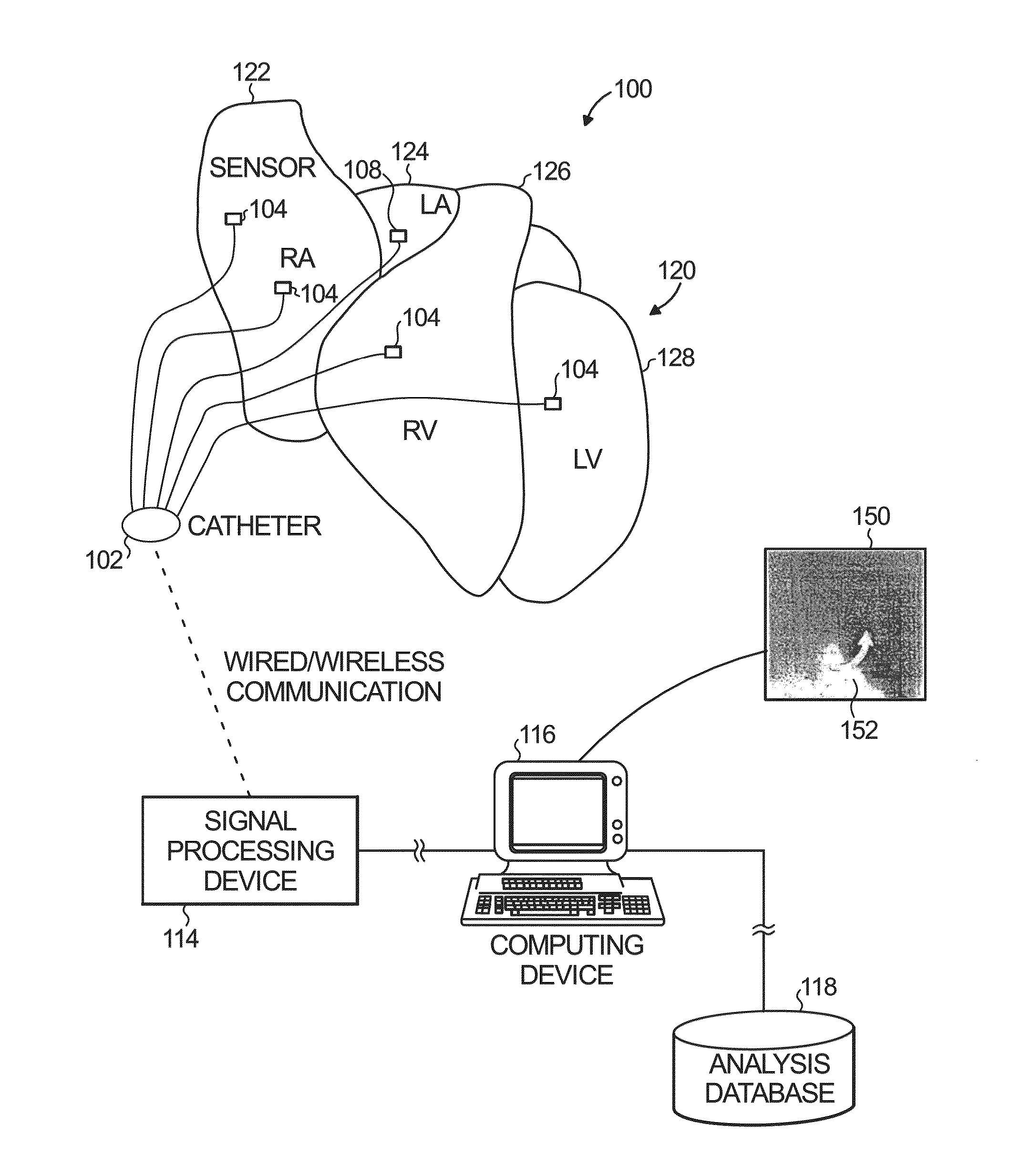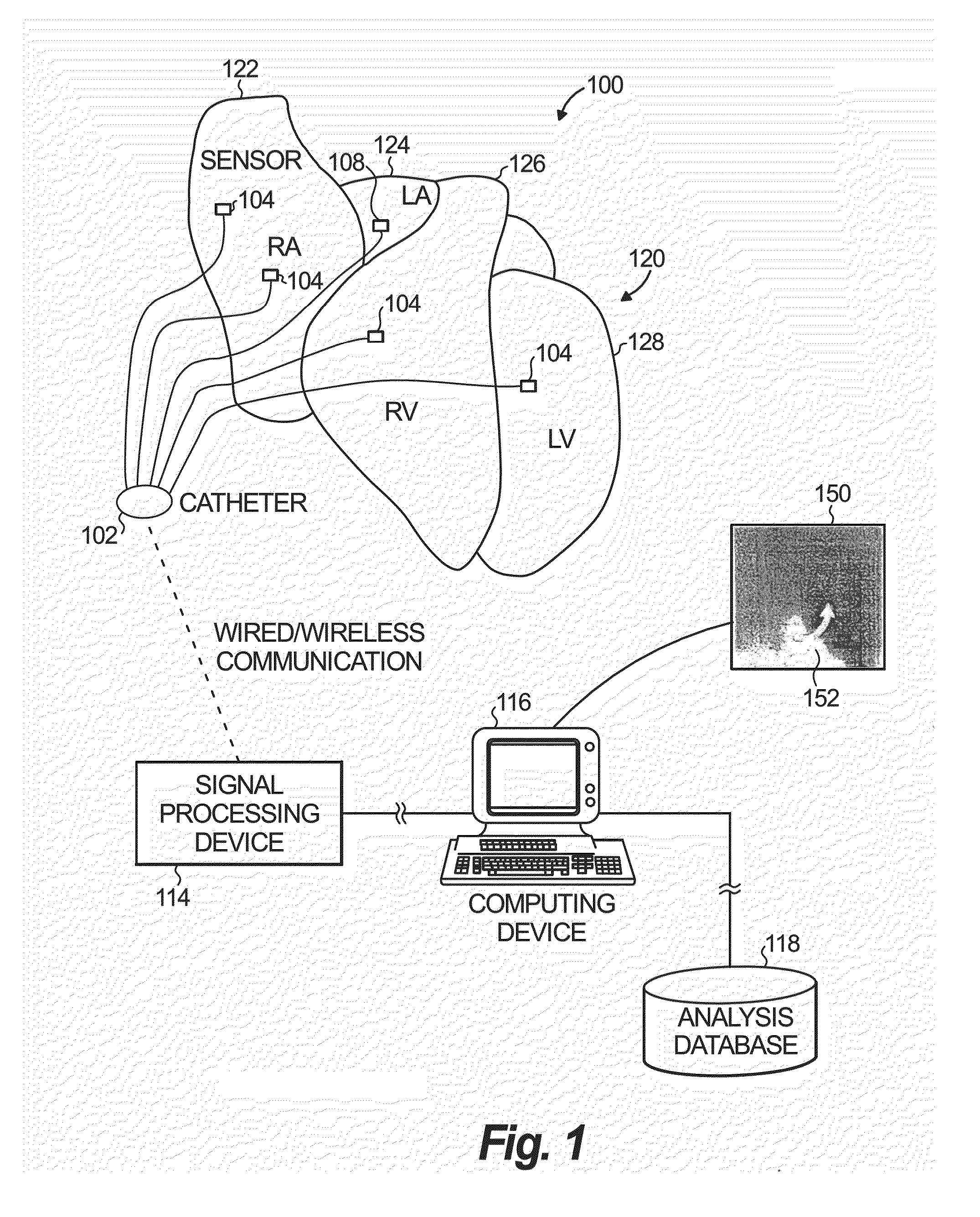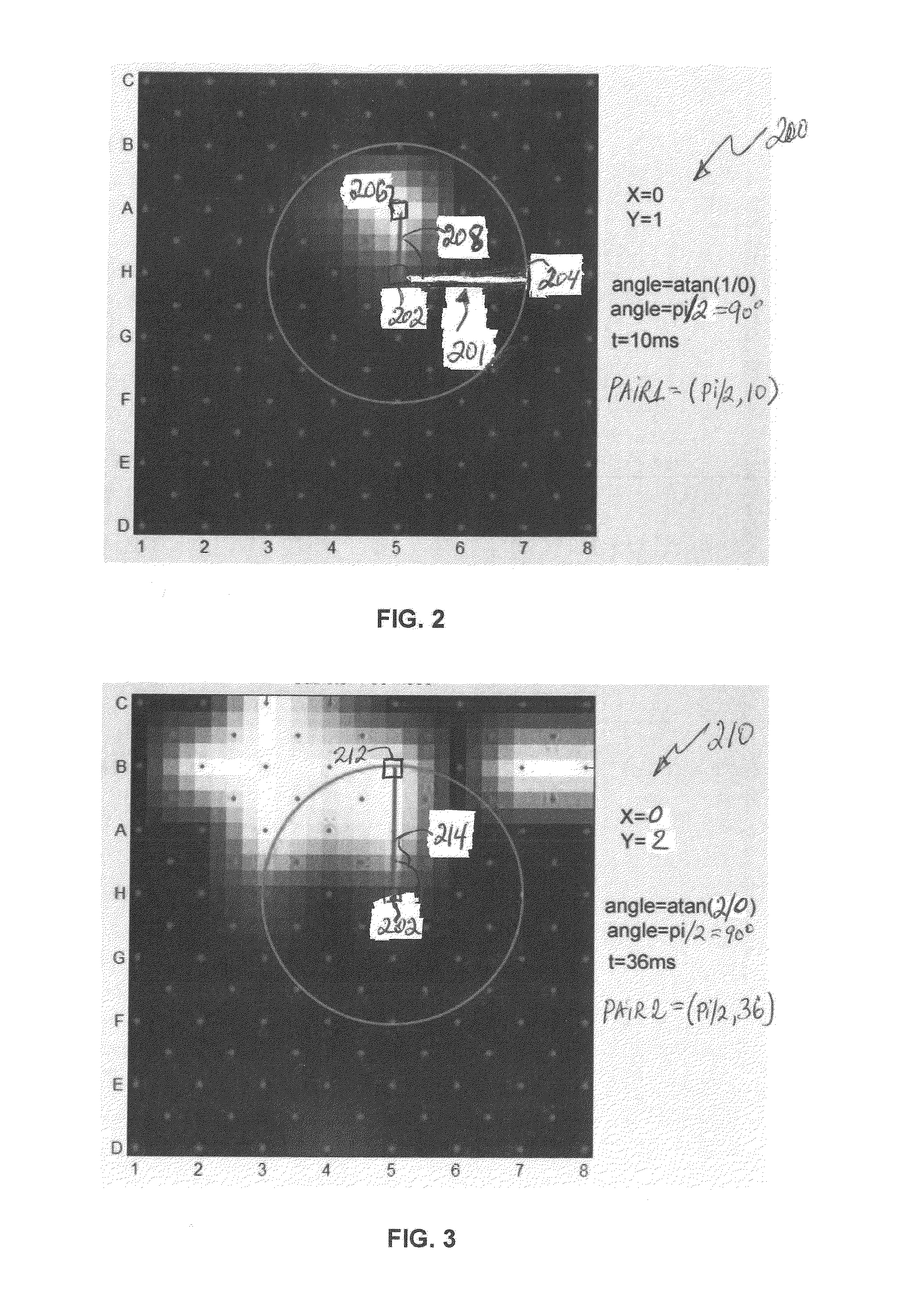System and method of identifying sources associated with biological rhythm disorders
a biological rhythm and source technology, applied in the field of biological rhythm disorders, can solve the problems of difficult treatment of heart rhythm disorders, affecting the normal functioning of the heart rhythm, and affecting the normal functioning of the heart rhythm
- Summary
- Abstract
- Description
- Claims
- Application Information
AI Technical Summary
Benefits of technology
Problems solved by technology
Method used
Image
Examples
Embodiment Construction
[0085]A system and method for identifying one or more sources of biological rhythm disorder (e.g., heart rhythm disorders) are disclosed herein. In the following description, for the purposes of explanation, numerous specific details are set forth in order to provide a thorough understanding of example embodiments. It will be evident, however, to one skilled in the art, that an example embodiment may be practiced without all of the disclosed specific details.
[0086]FIG. 1 illustrates an example system 100 to identify a source (or sources) of a biological rhythm disorder (e.g., heart rhythm disorder) in a human patient. Specifically, the example system 100 is configured to access cardiac information (signals) collected / detected from the patient's heart in connection with the heart rhythm disorder. The system 100 is further configured to process the signals in order to determine at least one spatial area including one or more spatial elements about which there is progressive angular de...
PUM
 Login to View More
Login to View More Abstract
Description
Claims
Application Information
 Login to View More
Login to View More - R&D
- Intellectual Property
- Life Sciences
- Materials
- Tech Scout
- Unparalleled Data Quality
- Higher Quality Content
- 60% Fewer Hallucinations
Browse by: Latest US Patents, China's latest patents, Technical Efficacy Thesaurus, Application Domain, Technology Topic, Popular Technical Reports.
© 2025 PatSnap. All rights reserved.Legal|Privacy policy|Modern Slavery Act Transparency Statement|Sitemap|About US| Contact US: help@patsnap.com



